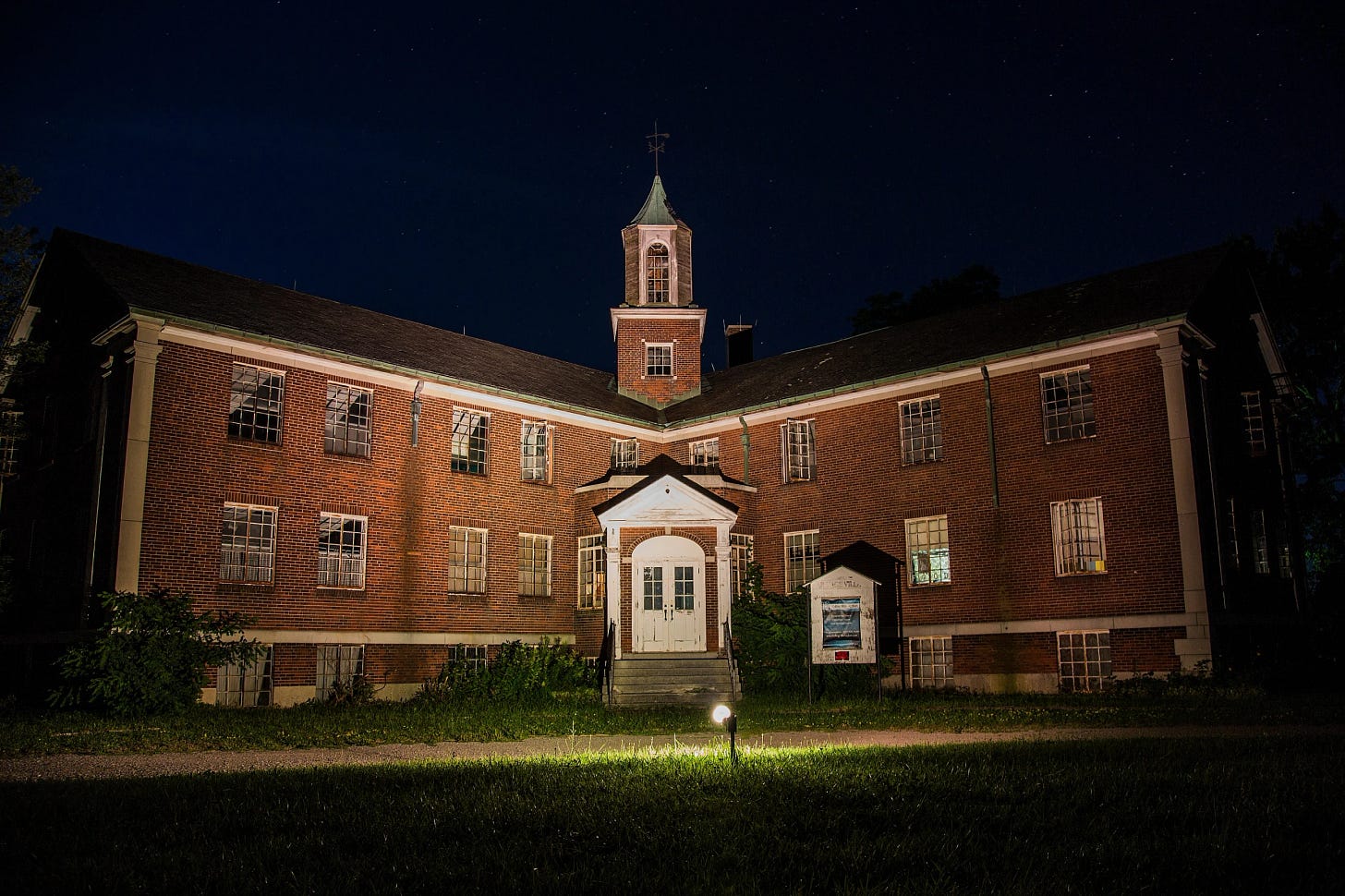Tucked away in East Bethany, NY, Rolling Hills Asylum opened its doors on January 1, 1827. But before it became an asylum, it served a very different purpose. Originally known as the Genesee County Poor Farm, or simply a Poor House, it was a government-run facility designed to house and support the needy. Back then, those deemed "paupers"—essentially anyone without a source of income—could end up in one of these institutions, thanks to the government’s Poor Laws, which dictated who received assistance.
Like many poor farms of the time, the Genesee County Poor Farm housed a wide range of people, including orphans, those with mental illnesses, elderly individuals who couldn’t care for themselves, people with physical disabilities, impoverished families, criminals, and vagrants. By 1828, the property expanded to include a stone building specifically for the so-called “lunatics” and anyone guilty of misconduct.
Spanning 53,000 square feet and sitting on 200 acres, the asylum functioned as a self-sustaining farm. Able-bodied residents were required to contribute, handling chores like farming, cleaning, and baking. However, by 1887, the Genesee County Board of Supervisors decided that people suffering from “acute insanity” should be relocated to state-run institutions. As a result, less severe cases were transferred to the Buffalo State Asylum. In contrast, the more violent or severe cases were moved to Willard Asylum in Ovid, NY—a place rumored to be even more haunted than Rolling Hills.
Despite these changes, Rolling Hills continued operating, eventually transitioning into a nursing home before closing its doors in 1974. Over the years, the property passed through multiple owners until 2009, when paranormal investigator Sharon Coyle and her husband, Jason, took over. Sharon, founder of the Journey Paranormal Society, first visited the asylum in 2008. When she learned the property would be shutting down, she boldly decided to purchase it, ensuring its legacy as one of the most haunted locations in the country.
The Haunting Legacy
Now, let’s get to the spooky stuff. Rolling Hills Asylum is home to an estimated 1,700 documented deaths—though that number is likely much higher. The asylum’s history department pieced together this number using registration books, coffin purchase records, mortuary listings, and reports from the Superintendents of the Poor to the County Board of Supervisors. But here’s where things get eerie: there is no official cemetery register or plot map. Given that the deceased were buried on the property—many in unmarked graves—the true number of deaths remains a mystery. Sharon herself believes the actual count is three times what’s documented.
With so much death and tragedy tied to the property, it’s no surprise that Rolling Hills has become a paranormal hotspot. It has been featured on numerous ghost-hunting shows, including Ghost Hunters, TAPS, and Buzzfeed Unsolved.
Friendly Spirits
Despite its ominous reputation, many of the spirits at Rolling Hills are described as helpful and even protective. If you call out for assistance, there’s a good chance one of these resident ghosts will show up.
One of the most well-known entities is Emma, a former nurse believed to still linger in her old room. She’s known for responding when people ask for help, making her one of the more reassuring presences at the asylum.
Then there’s Roy Crouse, a crowd favorite. In life, and apparently in death, Roy was a gentle giant, standing at a staggering 7 feet 6 inches. Witnesses describe him as a shadow figure, and Sharon herself had an unforgettable encounter with him. Shortly after taking ownership of the asylum, she had a run-in with a rat in the infirmary—an experience that left her screaming and fleeing. The next day, she found the rat dead on the stairs, blood oozing from its mouth, and above it, a giant bloody handprint. Sharon believes Roy took care of the rat for her. That eerie handprint? Still visible on the wall today.
Darker Encounters
Not all spirits at Rolling Hills are so welcoming. Some encounters lean heavily into the spine-chilling category.
One of the most infamous entities is The Screaming Lady, believed to be Phoebe White, the first resident of the Poor Farm. She arrived at just nine years old and lived there for 56 years. Many believe she’s trying to communicate, but since she can’t, her frustration manifests as bloodcurdling screams. While not necessarily malicious, hearing a disembodied scream in an abandoned asylum would be unnerving, to say the least.
Then, there’s The Shadow Hallway—arguably the most terrifying hotspot. Leading to the infirmary, this corridor is notorious for sightings of shadow people. Some appear as solid figures, while others take on a hazy, amorphous form, ranging from light gray to pitch black. They are seen peeking out of doorways, crossing the hall, or—this is where it gets truly unsettling—crawling across the floor toward unsuspecting visitors. Imagine sitting in the dark, taking a break from investigating, and suddenly seeing a shadowy figure crawling toward you. No. Thank. You.
And if you’re feeling festive (or brave), there’s the Christmas Room—a space still decorated year-round. Originally used for Santa’s visits to the children at the Poor Farm, this room remains active, with reports of moving toys and playful child spirits making their presence known.
Visit—If You Dare
If you’re intrigued, Rolling Hills Asylum offers a variety of tours. Whether you want a quick two-hour walkthrough or an in-depth, eight-hour paranormal investigation, there are plenty of opportunities to experience the hauntings firsthand.
So, would you dare spend the night? Let me know what you think—because personally, I’d rather not have a shadow person crawling toward me in the dead of night.





Creepy! There were a number of poor houses around North America in this time period. I referenced the Poor House in Wellington County, Canada in a piece I wrote around Halloween. They all seem to share the same characteristics— creepy buildings and haunted stories.
Great story...